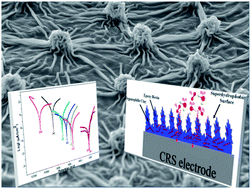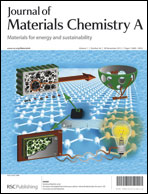3D-bioprinting approach to fabricate superhydrophobic epoxy/organophilic clay as an advanced anticorrosive coating with the synergistic effect of superhydrophobicity and gas barrier properties†
Abstract
Novel anti-corrosive coatings were prepared by replicating the fresh leaves of Xanthosoma sagittifolium, a species of tropical flowering plant. These coatings have the synergistic effect of superhydrophobicity and gas barrier properties. The superhydrophobic epoxy/organophilic clay (SEC) coating, prepared by a 3D-bioprinting technique based on the surface of fresh Xanthosoma sagittifolium leaves, serves to protect cold-rolled steel (CRS) from corrosion. Initially, a negative-PDMS template was replicated from the hierarchical structure of fresh Xanthosoma sagittifolium foliage. Subsequently, SEC was coated on to a CRS electrode utilizing a 3D-bioprinting method with a negative-PDMS template and an epoxy/organophilic clay matrix solution as the ink. The CRS electrode coated with SEC was found to have a water contact angle (WCA) of 153°, which was much higher than that of a flat epoxy/organophilic clay (FEC) spin-coated CRS electrode (WCA = 94°). Not only does the SEC coating exhibit superhydrophobicity, but it has gas barrier properties as well. It was expected that the introduction of an organophilic clay into an epoxy matrix would result in the anticorrosion properties being ameliorated because of the prolonged diffusion pathways of water vapor and oxygen. When the superhydrophobic structures of Xanthosoma sagittifolium leaves are replicated on the epoxy/organophilic clay, the SEC coatings were found to have prominently enhanced corrosion protection compared to the corresponding CRS coated with a pristine epoxy resin and FEC, on the basis of a series of electrochemical corrosion measurements performed under both saline and acidic conditions.


 Please wait while we load your content...
Please wait while we load your content...